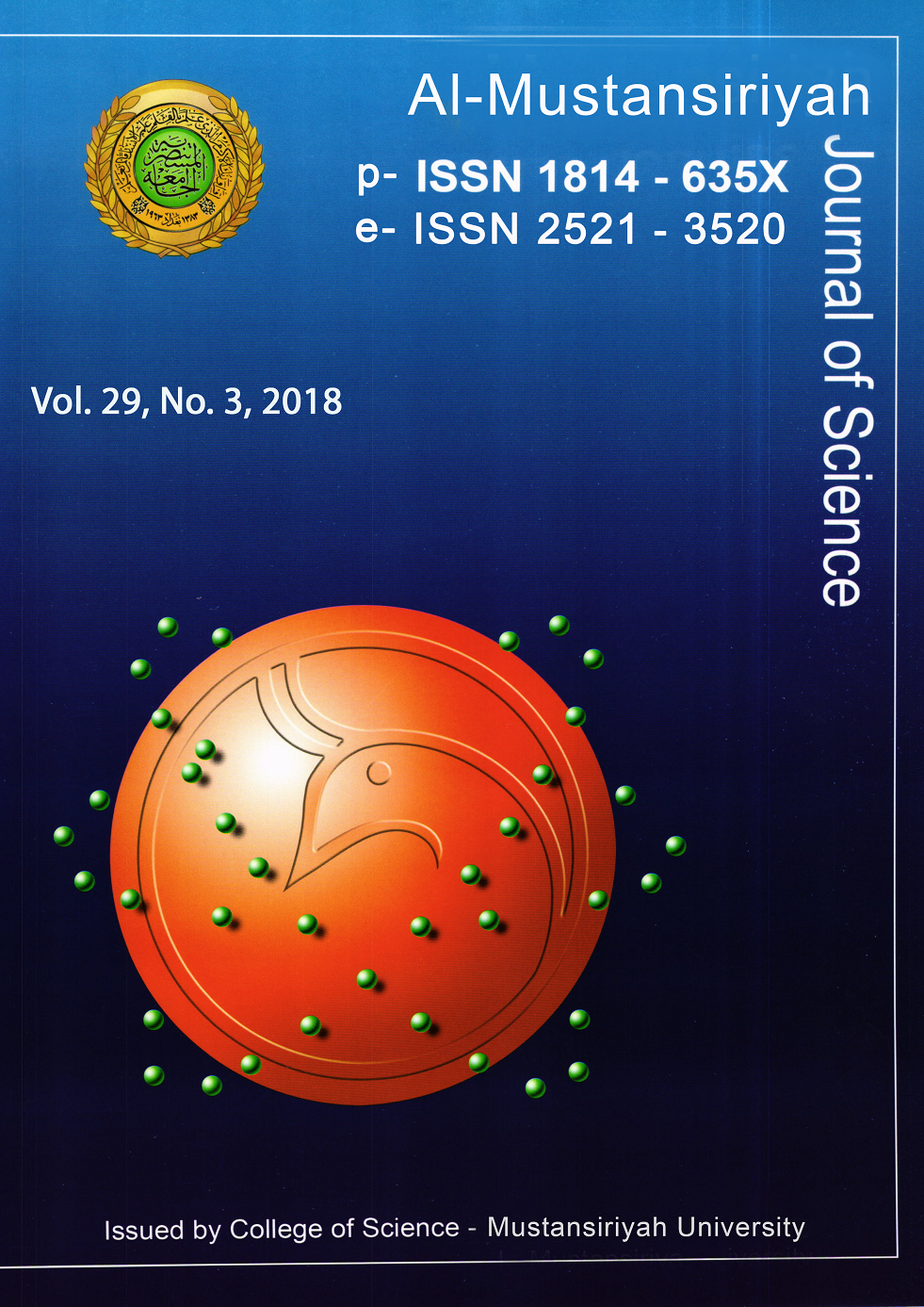Biosynthesis , Characterization and Removal Efficiency for Petroleum Leakage of the Cofe2o4 Nanoparticles
DOI:
https://doi.org/10.23851/mjs.v29i3.618Keywords:
Aesculus hippocastanum, CoFe2O4, Biosynthesis, Crude oil treatment, Daphnia magna, lethal dose.Abstract
Magnetic nanoparticles are widely used in areas such as biosensors, data storage devices, waste water treatment and biomedicine due to their biocompatibility and low toxicity. In this study, biosynthesis of the CoFe2O4 nanoparticle (NP) was carried out using the bark extract of Aesculus hippocastanum plant as a reducing and capping agent. Synthesized NPs were char-acterized by ultraviolet-visible spectrophotometer (Uv-Vis.), Dynamic Light Scattering (DLS), zeta load, X-Ray Dust Diffraction (XRD), Fourier Transformed Infrared Spectroscopy (FT-IR), Scanning Electron Microscopy, Raman, BET, and Thermogravimetric Thermal Analysis (TGA). The Lethal dose value (LD50) and the crude oil removal efficiency were examined. The characteristic light absorption of the CoFe2O4NP has been measured at 330 nm, surface charge of +14.4 mV, mean size of 75 nm and effective diameter of 432 nm. The XRD analy-sis revealed that the particle structure was in the cubic spinel structure with functional groups bound by FT-IR analysis and Raman data. It has been noted that the CoFe2O4NP, which was synthesized by biological method, can remove a 78.5% of the crude oil from the contaminat-ed water. It has been determined that the NP’s have a low toxic effect on D. magna (LD50= 728.267 ppm). In this study, it has been suggested that the CoFe2O4 NP with A. hippocasta-num bark extract could be synthesized by a cheap, relatively easy and environmentally friendly method which used for purification of contaminated water bodies.Downloads
References
Zi, Z., Sun, Y., Zhu, X., Yang, Z., Dai, J., Song, W., 2009. Synthesis and mag-netic properties of CoFe2O4 ferrite nano-particles. Journal of Magnetism and Magnetic Materials, 321: 1251–1255.
Pervaiz, E., Gul, I.H., 2013. Hydrother-mal synthesis and characterization of CoFe2O4 nanoparticles and nanorods. Journal of Superconductivity and Novel Magnetism, 26 (2): 415–424.
Phumying, S., Labuayai, S., Thomas, C., Amornkitbamrung, V., Swatsitang, E., vd., 2013. Aloe vera plant-extracted so-lution hydrothermal synthesis and mag-netic properties of magnetite (Fe3O4) na-noparticles. ApplPhysA 111:1187–1193.
Çolak, H., Karaköse, E., Duman, F., 2017. High optoelectronic and antimi-crobial performances of green synthe-sized ZnO nanoparticles using Aescu-lushippocastanum. Environmental Chemistry Letters, 15: 547–552.
Waje, S.B., Hashim, M., Yusoff, W.D.W., Abbas, Z., 2010. X-ray diffrac-tion studies on crystallite size evolution of CoFe2O4nanoparticles prepared using mechanical alloying and sintering. Ap-plied Surface Science 256: 3122–3127
Maaz, K., Mumtaz, A., Hasanain, S.K., Ceylan, A., 2007. Synthesis and magnet-ic properties of cobalt ferrite (CoFe2O4) nanoparticles prepared by wet chemical route. Journal of Magnetism and Magnetic Materials, 308: 289–295.
Mostaghni, F., Daneshvar, A., Sakhaie, M., 2016. Green synthesis of nano size CoFe2O4 using Chenopodium album leaf extract for photo degradation of organic pollutants. Iranian Chemical Commu-nication, 5: 429-435
Pui, A., Gherca, D., Carja, G., 2011. Characterization and magnetic properties of capped CoFe2O4 nanoparticles ferrite prepared incarboxymethylcelullose solu-tion. Digest Journal of Nanomaterials and Biostructures, 6 (4): 1783-1791.
Srivastava, V., Kohout, T., Sillanpää, M., 2016. Potential of cobalt ferrite nanopar-ticles (CoFe2O4) for remediation of hex-avalent chromium from synthetic and printing press wastewater. Journal of Environmental Chemical Engineering, 4: 2922–2932.
Atta, A.M., Al-Lohedan, H.A., Al-Hussain, S.A., 2015. Functionalization of magnetite nanoparticles as oil spill col-lector. Int. J. Mol. Sci., 16: 6911-6931.
Palchoudhury, S., Lead, J.R., 2014. A Facile and cost-effective method for separation of oil−water mixtures using polymer-coated ıron oxide nanoparticles. Environ. Sci. Technol., 48: 14558−14563.
Okamoto, A., Yamamuro, M., Tata-razako, N., 2014. Acute toxicity of 50 metals to Daphnia magna. J. Appl. Tox-icol, 35: 824–830.
Blinova, I., Kanarbik, L., Irha, N., Kahru, A., 2017. Ecotoxicity of na-nosized magnetite to crustacean Daphnia magna and duckweed Lemna minor. Hydrobiologia 798:141–149.
González-Andrés, V., Diez-Ortiz, M., Delpivo, C., Janer, G., Fritzsche, A., Vázquez-Campos, S., 2017. Acute eco-toxicity of coated colloidal goethite na-noparticles on Daphnia magna: Evaluat-ing the influence of exposure approach-es. Science of the Total Environment 609: 172–179.
Baumann, J., Köser, J., Arndt, D., Filser, J., 2014. The coating makes the differ-ence: Acute effects of iron oxide nano-particles on Daphnia magna. Science of the Total Environment 484: 176–184.
Downloads
Key Dates
Published
Issue
Section
License
Copyright (c) 2019 Al-Mustansiriyah Journal of Science

This work is licensed under a Creative Commons Attribution 4.0 International License.
(Starting May 5, 2024) Authors retain copyright and grant the journal right of first publication with the work simultaneously licensed under a Creative Commons Attribution (CC-BY) 4.0 License that allows others to share the work with an acknowledgement of the work’s authorship and initial publication in this journal.






















